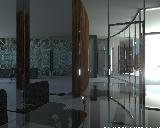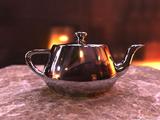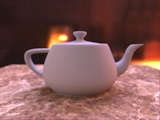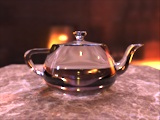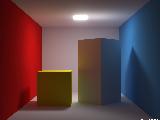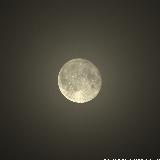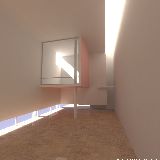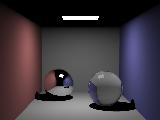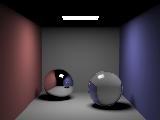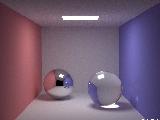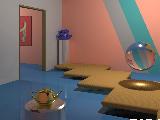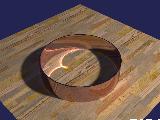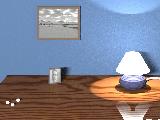|
Cornell box series showing the effect of simulating global illumination.
All the images have been rendered at 1024x768 with 4 samples per pixel
on a Dual P3 800MHz Linux-PC. The ray tracing version took 1.5 seconds,
The version with soft shadows took 7 seconds. Adding caustics increased
the rendering time to 10 seconds and 2 seconds of photon tracing.
The global illumination version took 12 seconds to render and 3 seconds
of photon tracing time. For this scene the global photon map has
200,000 photons and the caustics photon map has 50,000 photons.
Finally, the path tracing reference image on the right
took a long time to render. The important thing to notice is that it
looks the same as the version rendered using photon mapping.
|
